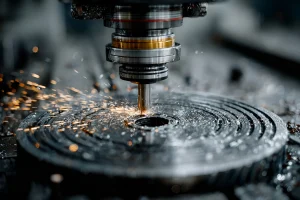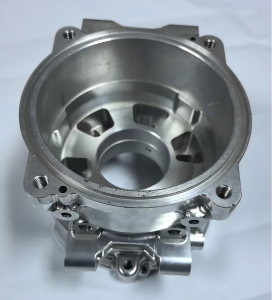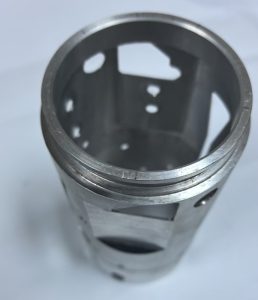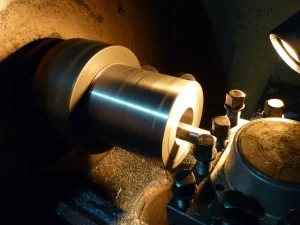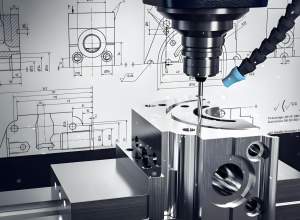I. Introduction
In the realm of modern manufacturing, CNC machining of thin-wall parts has emerged as a crucial yet challenging process. These thin-wall components, with their delicate structures and tight tolerances, are widely utilized in industries such as aerospace, automotive, medical, and electronics. From aircraft wing components that demand minimal weight without sacrificing strength to precision medical implants requiring intricate designs, the importance of accurately machined thin-wall parts cannot be overstated. However, achieving high-quality results in their machining is no easy feat. Issues like deformation, vibration, and tool wear constantly plague manufacturers, leading to potential defects and rework. This is where the value of rapidefficient in the CNC machining market becomes evident. By leveraging advanced techniques and optimized processes, rapidefficient can help overcome these hurdles, ensuring not only the precision and quality of thin-wall part machining but also enhancing overall productivity and cost-effectiveness. In the following sections, we will delve deeper into the strategies and methods that can lead to significant quality improvements in this specialized field.
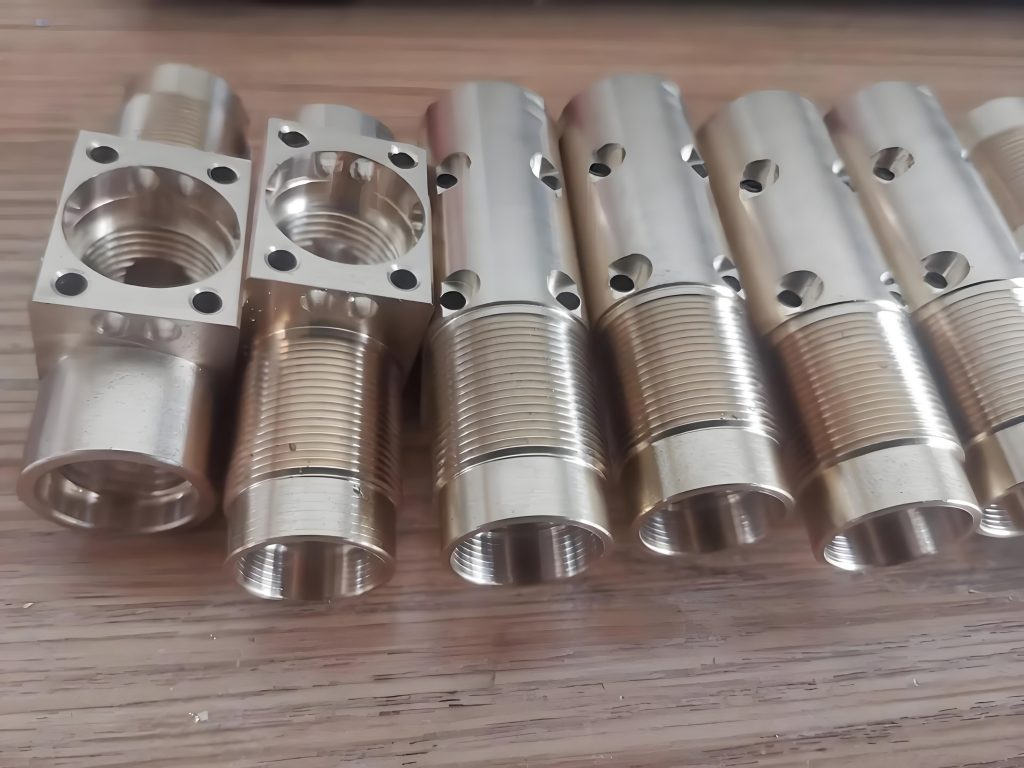
II. Understanding Thin-Wall Parts Machining
Thin-wall parts are defined by their relatively slender and delicate structures, typically characterized by a wall thickness that is significantly smaller compared to their overall dimensions. In many cases, the wall thickness can be as thin as a few millimeters or even less, depending on the specific application requirements. For instance, in the aerospace industry, certain components like wing ribs or engine casings may have wall thicknesses ranging from 1 to 3 millimeters to achieve the desired weight reduction while maintaining structural integrity.
One of the most prominent features of thin-wall parts is their low rigidity. Unlike bulkier, more robust components, these parts are highly susceptible to deformation under various forces. This includes not only the cutting forces exerted during machining but also clamping forces, thermal expansion and contraction, and even vibrations within the machining environment. The slightest imbalance in these forces can lead to dimensional inaccuracies and shape deviations, rendering the part unusable or requiring extensive rework.
Compared to conventional part machining, thin-wall part machining presents a host of unique challenges. In traditional machining, parts with thicker walls and greater rigidity can tolerate higher cutting forces and less precise fixturing. However, when it comes to thin-wall parts, every aspect of the machining process needs to be meticulously planned and controlled. Tool selection, for example, becomes crucial as the wrong tool geometry or material can exacerbate deformation. Cutting parameters such as feed rate, spindle speed, and depth of cut must be optimized to minimize the impact on the delicate part structure. Additionally, workholding and clamping strategies need to be devised to provide sufficient support without inducing excessive stress. Overall, achieving high-quality machining results for thin-wall parts demands a comprehensive understanding of these differences and a willingness to implement specialized techniques and processes.
III. Key Factors Affecting Machining Quality
A. Tool Selection
The choice of cutting tools is fundamental in thin-wall part machining. Different tool materials and geometries can have a significant impact on the machining outcome. For materials like aluminum alloys commonly used in thin-wall parts, carbide tools are often preferred due to their high hardness and wear resistance. In contrast, when machining titanium alloys, which are more difficult to cut, ceramic or polycrystalline diamond (PCD) tools might be necessary to withstand the high temperatures and abrasive forces.
Tool geometry also plays a crucial role. A large rake angle can reduce cutting forces, minimizing deformation of the thin-wall part. However, an overly large rake angle may lead to tool chipping. Therefore, a balance must be struck. For example, in milling operations, a proper helix angle can help with chip evacuation, preventing chip clogging that could otherwise increase cutting forces and damage the part. Additionally, the tool edge radius needs to be carefully considered. A sharp edge can provide better surface finish but may wear quickly, while a slightly rounded edge can enhance tool life at the expense of a slightly rougher surface.
B. Cutting Parameters
Cutting parameters such as spindle speed, feed rate, and depth of cut are critical determinants of machining quality. In thin-wall part machining, inappropriate settings can easily lead to vibration and deformation. A higher spindle speed generally reduces cutting forces by increasing the cutting speed per unit time, but it also generates more heat. If not properly managed, this heat can cause thermal expansion and distortion of the thin-wall part.
The feed rate directly affects the machining efficiency and surface quality. Too high a feed rate can result in excessive cutting forces, leading to part deformation and poor surface finish. Conversely, a too-low feed rate reduces productivity without necessarily improving quality. For thin-wall parts, it is often necessary to conduct trials to find the optimal feed rate that balances efficiency and precision.
The depth of cut is another parameter that demands careful adjustment. A shallow depth of cut helps reduce cutting forces and deformation, but it may increase machining time. In some cases, a stepped cutting approach can be adopted, gradually reducing the depth of cut in successive passes to achieve the desired dimensional accuracy while minimizing stress on the part.
C. Machining Process
The machining process, including roughing, semi-finishing, and finishing operations, needs to be carefully planned. In the roughing stage, the primary goal is to remove material quickly while leaving an appropriate allowance for subsequent operations. However, even during roughing, care must be taken to avoid excessive deformation. This can be achieved by using lower spindle speeds and larger depths of cut in a controlled manner, along with proper coolant application to dissipate heat.
During semi-finishing, the focus shifts to improving dimensional accuracy and surface quality. The cutting parameters are adjusted to reduce surface roughness and correct any minor deformations that occurred during roughing. High-precision tools are often employed to ensure closer tolerances.
In the finishing stage, the objective is to achieve the final surface finish and dimensional requirements. Ultra-fine cutting tools and optimized cutting parameters are used to produce a smooth surface with minimal residual stress. For example, in grinding operations for thin-wall parts, precision grinding wheels and gentle grinding forces are essential to prevent damage to the delicate part structure.
D. Machine Tool Precision and Stability
The precision and stability of the machine tool are the foundation of high-quality thin-wall part machining. Any inaccuracies or vibrations in the machine can be directly transferred to the workpiece. High-precision machine tools with tight tolerances in spindle rotation accuracy, slideway movement, and positioning systems are required.
Vibration is a major enemy in thin-wall part machining. Machine tools equipped with advanced vibration damping systems can effectively reduce the impact of external and internal vibrations. This includes using anti-vibration mounts, damping materials in the machine structure, and active vibration control technologies. Additionally, regular maintenance and calibration of the machine tool are essential to ensure its continued accuracy and stability. For example, checking and adjusting the spindle runout, lubricating the slideways, and verifying the positioning accuracy at regular intervals can all contribute to reliable machining results.
IV. Quality Improvement Strategies in Detail
A. Optimized Tool Selection
Selecting the right cutting tools is akin to laying the foundation for successful thin-wall part machining. For starters, the choice of tool material must align with the part material. When dealing with aluminum alloys, carbide tools are often the go-to option. Carbide offers a good balance of hardness and toughness, allowing for efficient material removal while maintaining tool life. In contrast, for more abrasive materials like titanium alloys, ceramic or polycrystalline diamond (PCD) tools come into play. These materials can withstand the high temperatures and severe abrasion associated with machining such difficult alloys.
Tool geometry is equally crucial. A proper rake angle can significantly reduce cutting forces. For example, in milling thin-wall aluminum parts, a positive rake angle of around 10 to 15 degrees can minimize deformation. However, caution must be exercised as an overly large rake angle may lead to tool chipping. The helix angle of milling cutters also matters. A higher helix angle, say 30 to 45 degrees, facilitates better chip evacuation, preventing chip clogging that could otherwise increase cutting forces and potentially damage the part. Additionally, the edge radius of the tool needs to be carefully calibrated. A sharp edge can yield a superior surface finish but might wear rapidly. In some cases, a slightly rounded edge, with a radius of 0.1 to 0.3 mm, can enhance tool durability at the expense of a marginally rougher surface, which might be acceptable depending on the application requirements.
B. Precision Control of Cutting Parameters
Precision control of cutting parameters is the linchpin in achieving high-quality thin-wall part machining. Spindle speed, for instance, needs to be optimized based on the part material and tool characteristics. In machining aluminum thin-wall parts, a spindle speed in the range of 10,000 to 20,000 RPM might be appropriate. This higher speed helps reduce cutting forces by increasing the cutting speed per unit time, but it also demands efficient cooling to manage the heat generated. If the spindle speed is too low, say below 5,000 RPM, the cutting forces increase, leading to greater deformation risks.
Feed rate is another critical parameter. For thin-wall parts, a conservative feed rate is often necessary. In the initial roughing stage, a feed rate of around 0.1 to 0.3 mm per tooth might be suitable to balance material removal rate and part stability. As the machining progresses to the finishing stage, the feed rate can be reduced to 0.05 to 0.1 mm per tooth to achieve a finer surface finish. If the feed rate is set too high, say above 0.5 mm per tooth, the part is likely to deform due to excessive cutting forces, and the surface finish will deteriorate.
The depth of cut also requires meticulous adjustment. In the roughing phase, a relatively larger depth of cut, perhaps 1 to 3 mm, can be employed to quickly remove material. However, as the part nears its final dimensions, the depth of cut must be gradually reduced to 0.1 to 0.5 mm in the finishing passes. This stepped approach helps minimize stress on the part and ensures dimensional accuracy. Overall, finding the right combination of these cutting parameters often involves trial and error, backed by machining simulations and practical experience.
C. Advanced Machining Processes
Advanced machining processes offer new avenues to enhance the quality of thin-wall part machining. High-speed milling, for example, has revolutionized the way these delicate parts are fabricated. By operating at spindle speeds upwards of 20,000 RPM and feed rates exceeding 1 m/min, high-speed milling can reduce cutting forces and thermal effects. This is because the shorter contact time between the tool and the workpiece minimizes heat generation and deformation. In machining aerospace-grade aluminum alloy thin-wall components, high-speed milling has enabled manufacturers to achieve tighter tolerances and smoother surface finishes, reducing the need for subsequent manual polishing.
Micro-lubrication is another game-changer. Instead of traditional flood cooling, which can introduce thermal shocks and contaminate the workpiece, micro-lubrication delivers a precise amount of lubricant-often in the form of a fine mist-directly to the cutting zone. This not only reduces friction and tool wear but also minimizes the impact of cooling on the part’s dimensional stability. In the medical device manufacturing industry, where precision and cleanliness are paramount, micro-lubrication has become a standard practice for machining thin-wall implants.
Adaptive machining is yet another innovative approach. Using in-process sensors to monitor cutting forces, tool wear, and part deformation in real-time, adaptive machining systems can automatically adjust cutting parameters. For instance, if the sensors detect an increase in cutting forces due to tool wear, the system can reduce the feed rate or increase the spindle speed to compensate. This dynamic control ensures consistent machining quality throughout the production run, especially for long and complex thin-wall part geometries.
D. Regular Machine Maintenance and Upgrades
Regular maintenance and upgrades of machine tools are essential to sustain the precision and stability required for thin-wall part machining. Machine tools are complex systems, and even minor inaccuracies can compound over time and manifest as defects in the machined parts. Daily checks should include lubricating slideways, verifying spindle runout, and inspecting the integrity of the clamping and fixturing systems. Lubrication of slideways, for example, ensures smooth movement of the cutting tool, reducing the risk of vibration-induced errors. If the slideways are inadequately lubricated, stick-slip motion can occur, leading to uneven cutting and surface irregularities.
Periodic calibration of the machine’s positioning accuracy is equally important. Using precision measurement tools like laser interferometers, manufacturers can detect and correct any deviations in the machine’s axes. This calibration might be necessary every few months, depending on the machine’s usage intensity. Additionally, upgrading the machine’s control system can unlock advanced features. Newer CNC controllers often come with enhanced algorithms for vibration suppression, better interpolation for smoother tool paths, and improved diagnostic capabilities. For instance, rapidefficient, a leading CNC aluminum machining service provider, invests in regular machine maintenance and control system upgrades. By doing so, they ensure that their machines are always operating at peak performance, delivering high-quality thin-wall parts with consistent accuracy and reliability.
V. The Value of Rapidefficient in the CNC Machining Market
In the highly competitive CNC machining market, rapidefficient has emerged as a key player, especially in the domain of thin-wall part machining. Their commitment to leveraging the latest technological advancements and process optimizations offers manufacturers a distinct edge.
One of the primary contributions of rapidefficient lies in significantly enhancing machining efficiency. By employing state-of-the-art CNC machine tools equipped with high-speed spindles and advanced control systems, they can execute machining operations at remarkable speeds. For instance, in the production of thin-wall aluminum components for the electronics industry, rapidefficient’s machines can achieve feed rates that are 30% to 50% higher than industry averages, drastically reducing production cycle times. This not only allows manufacturers to meet tight deadlines but also respond swiftly to market demands, giving them a competitive advantage in terms of time-to-market.
Quality assurance is another area where rapidefficient excels. Their stringent quality control processes, starting from the selection of raw materials to the final inspection of machined parts, ensure that every component meets the most exacting standards. In thin-wall part machining, where even the slightest deviation can render a part unusable, rapidefficient’s attention to detail is paramount. Through the use of precision measurement tools and in-process inspection techniques, they maintain an impressively low defect rate, often less than 1% for critical aerospace and medical components. This level of quality not only minimizes rework and scrap but also bolsters the reputation of manufacturers who rely on their services.
Cost reduction is a crucial aspect of rapidefficient’s value proposition. By optimizing cutting parameters, tool selection, and machining processes, they are able to minimize material waste. For example, in machining titanium alloy thin-wall parts, their precise control over the depth of cut and feed rate can reduce material consumption by up to 20%, translating into significant cost savings over large production runs. Additionally, their efficient production processes mean fewer man-hours are required, further cutting down labor costs. This combination of material and labor cost savings makes rapidefficient an attractive partner for cost-conscious manufacturers.
In the realm of innovation and R&D, rapidefficient is constantly pushing the boundaries. They invest a significant portion of their resources in exploring new machining techniques and materials. Their R&D efforts have led to the successful implementation of micro-lubrication systems in thin-wall part machining, reducing coolant consumption by over 50% while enhancing surface finish quality. By staying at the forefront of technological innovation, rapidefficient enables its clients to access cutting-edge manufacturing solutions, future-proofing their production capabilities and ensuring they remain competitive in an ever-evolving market.
VI. Case Studies
A. Aerospace Component Machining
In the aerospace industry, a leading manufacturer was tasked with producing a series of thin-wall aluminum alloy brackets for a new aircraft design. These brackets had extremely tight tolerances, with wall thicknesses ranging from 1.5 to 2.5 mm, and required a high level of surface finish to ensure proper functionality and longevity in the harsh operating environment.
Initially, the manufacturer faced significant challenges. Using conventional machining methods and tools, they encountered issues such as excessive vibration during milling operations, leading to surface roughness and dimensional inaccuracies. The deformation of the thin-wall parts was also a major concern, as it affected the overall structural integrity of the brackets.
Upon partnering with rapidefficient, a comprehensive quality improvement strategy was implemented. Rapidefficient’s engineers first optimized the tool selection, choosing carbide end mills with specially designed geometries. These tools had a larger rake angle to reduce cutting forces and a helix angle optimized for efficient chip evacuation.
In terms of cutting parameters, a series of simulations and tests were conducted. The spindle speed was increased to 18,000 RPM, while the feed rate was carefully adjusted to 0.15 mm per tooth during roughing and further reduced to 0.08 mm per tooth in the finishing stage. The depth of cut was gradually decreased from an initial 2 mm in roughing to 0.3 mm in the final passes.
Advanced machining processes, including micro-lubrication, were introduced. Instead of traditional flood cooling, a micro-lubrication system delivered a fine mist of lubricant directly to the cutting zone. This minimized thermal shock and reduced tool wear, while also enhancing the surface finish.
The results were remarkable. The surface roughness of the machined brackets was reduced from an initial Ra 1.2 μm to Ra 0.4 μm, meeting the strict aerospace standards. Dimensional accuracy was improved, with tolerances held within ±0.05 mm, compared to the previous ±0.15 mm. The deformation rate was also significantly decreased, ensuring the reliability and safety of the components in the aircraft.
B. Medical Device Manufacturing
A medical device company was developing a new line of precision implants made from titanium alloy. These thin-wall implants required intricate geometries and a mirror-like surface finish to promote biocompatibility and minimize the risk of rejection in patients.
The company initially struggled with the machining process. The high hardness and abrasive nature of titanium alloy led to rapid tool wear, resulting in inconsistent surface quality and dimensional deviations. The delicate nature of the thin-wall structures also made them prone to deformation during machining.
Rapidefficient stepped in with their expertise. They selected ceramic and polycrystalline diamond (PCD) tools, which were capable of withstanding the extreme cutting conditions associated with titanium alloy machining. The tool geometries were carefully optimized, with a rounded edge radius to enhance tool life and a proper rake angle to control cutting forces.
Cutting parameters were fine-tuned based on extensive experimentation. The spindle speed was set to 12,000 RPM, and the feed rate was maintained at a conservative 0.1 mm per tooth throughout the machining process. The depth of cut was limited to 0.5 mm in each pass to minimize stress on the thin-wall parts.
Adaptive machining techniques were employed, using in-process sensors to monitor cutting forces and tool wear in real-time. If any deviations were detected, the system automatically adjusted the cutting parameters to ensure consistent quality. Additionally, a precision grinding process was incorporated in the finishing stage to achieve the required mirror-like surface finish.
The outcome was highly satisfactory. The surface finish of the implants met the stringent medical standards, with a roughness of Ra 0.05 μm. Dimensional accuracy was held within ±0.02 mm, ensuring a precise fit within the patient’s body. The overall production efficiency was also increased by 30%, allowing the company to meet market demands more effectively and bring their life-saving devices to patients sooner.
VII. Conclusion
In conclusion, achieving high-quality CNC machining of thin-wall parts is a multifaceted endeavor that demands careful consideration of numerous factors. From the selection of appropriate tools and precise control of cutting parameters to the adoption of advanced machining processes and regular machine maintenance, each step plays a pivotal role in ensuring the final product meets the stringent requirements of various industries. Rapidefficient stands out in the CNC machining market as a reliable partner, offering not only state-of-the-art technology and expertise but also a proven track record of enhancing efficiency, quality, and cost-effectiveness. Whether you are in the aerospace, medical, automotive, or any other industry relying on thin-wall part manufacturing, implementing these quality improvement strategies and collaborating with a trusted service provider like rapidefficient can make all the difference. Don’t let machining challenges hold back your production capabilities – take action today and unlock the full potential of your thin-wall part machining projects.

